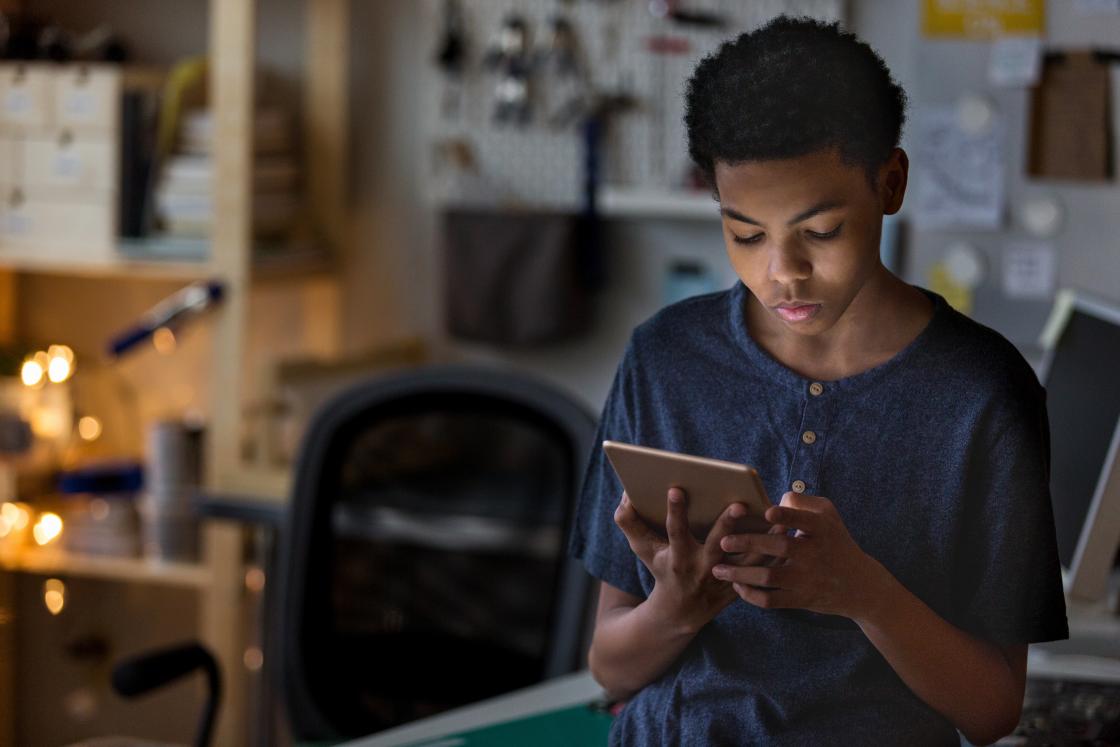Insight
Keeping children safe by monitoring their online activity

Date Published
20/10/2020
Reading time
10 minutes
Near-unlimited access to the internet benefits young people in a number of ways. From an education perspective, it gives them access to a whole world of information, news and views at the click of a button.
But while this has encouraged pupils to be curious and learn independently, the reality is that the internet is home to a lot of unsavoury content. As a result, online safety is a major safeguarding concern for schools.
Not only can the internet enable inappropriate communication among young people but it can also fuel negative activities or behaviours. At the extreme end of the spectrum, this includes gang rivalry, bullying, suicide and sex abuse. According to analysis of the NSPCC, more than 10,000 offences of online child sex abuse were recorded by the police between April 2019 and March 2020, a 16% increase on the previous year.
Unsurprisingly, online safety has become an even greater concern since the onset of the COVID-19 pandemic. Indeed, remote learning, and the increased time online that it has entailed, means that access to the internet now poses a greater risk than ever for young people – especially the most vulnerable.
In light of this new context, and with the DfE’s new Keeping Children Safe in Education guidance focusing more on online safety, schools need to be proactive.
Delivering the best advice
When it comes to keeping children safe online, prevention is the best remedy. Unfortunately, not all children get sufficient guidance on using the internet safely from their parents or carers.
A study published by Internet Matters in 2019 found that, while 66% of young people report getting advice from parents or carers on staying safe online, 31% said it was 'not good enough or useless'. This demonstrates the important role that schools have to play.
While many schools have already done a brilliant job of educating young people about how to use the internet safely, it’s important to note that this is now a requirement – as part of the new mandatory RSHE curriculum. The great news is that there are lots of resources available for schools to use, so they can give pupils valuable advice that could help them to stay safe online.
Keeping tabs on internet use
Schools are still required to monitor and filter content that students access on school premises and devices, including those given to vulnerable children for at-home learning during the COVID-19 pandemic. Indeed, children who may not have adequate family support may now have access to the internet on their own device at home, for the very first time. And, with technology no longer limited to ICT classes or school premises, young people have greater opportunities to use tech for non-educational, and potentially concerning, reasons.
Ofcom’s Online Nation report found that 79% of 12- to 15-year-olds reported having had a potentially harmful experience online in the past year – demonstrating the scale of the problem that schools are facing. And, with children having used the internet much more during lockdown, a recent survey commissioned by Internet Matters revealed that 60% of teachers are worried about their pupils’ safety online.
Schools must set up these devices with appropriate content monitoring and filtering software to fulfil their safeguarding duties and keep vulnerable children safe online.
Recognising real red flags
While monitoring software can be a critical tool for detecting safeguarding issues – automatically flagging potentially harmful content or activity – they also tend to pull through a vast amount of content due to ‘false positives’. Sorting through these possible red flags can be an administrative burden for teachers and other staff, who simply don’t have time to work through reams of information to find and escalate potential issues.
The risk with this is that, by the time a school has spotted an issue, it could be too late. For example, if a pupil uses the internet to research suicide, this should be dealt with immediately as they may plan to take action that day.
Monitoring services can help schools to sort the wheat from the chaff – and ensure that they’re responding quickly and appropriately to potential safeguarding concerns.
Entrust’s Digital Monitoring service is staffed with experts who are trained to spot anything that could be a safeguarding issue and will escalate to school staff on the day it happens.
From April to the beginning of September 2020 – before schools fully opened again – Entrust’s Digital Monitoring service escalated 120 potential safeguarding issues in secondary schools alone, of which 11% were linked to suicide risk, 12% to emotional health, 24% to sexual behaviour and 33% to pornography.
Protecting children online
With young people facing so many risks online today, prevention and education are crucial but they can only go so far. Indeed, the importance of robust content monitoring systems is clear, especially now as many vulnerable children could have to alternate between home and school learning.
Online activity must be monitored in a logical, systematic way to ensure that nothing is missed and vulnerable children are protected –and Entrust can help. With its digital monitoring software and service, Entrust enables teachers to focus on teaching, safe in the knowledge that any inappropriate online activity will be flagged and logged in accordance with DfE guidelines.
Make an Enquiry
Contact us to enquire about our servicesOr, call us on 0333 300 1900

